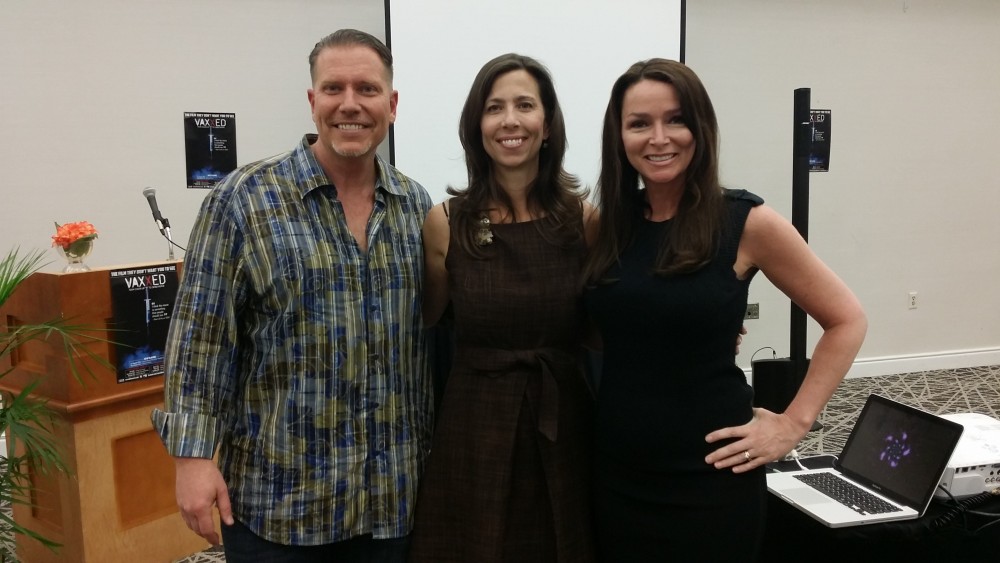Fluoridation remains a complicated matter for Worcester
By
Sarah Toy, Special to the Telegram & Gazette
Dr. G. Robert Evans said he was always determined his kids wouldn't have any cavities.
As a dentist, he had his children use fluoride drops, fluoride tablets and fluoride gels, especially his son, a budding actor.
"Then his permanent teeth came in," said Dr. Evans, who runs
a holistic medical and dental practice in Groton. "And I thought, 'Oh
my God, what have I done?' "
The enamel was severely mottled, blemished by unsightly brown and white spots.
"This was a kid who grew up on stage acting. He can't have ugly teeth."
The
dentist says he no longer uses fluoride in his practice, nor does he
carry any fluoride products in his office. He said his son uses veneers
to hide the mottling.
You may have heard of his son. His name is Chris. Some people know him as Captain America.
Dr.
Evans was convinced the mottling occurred because of the fluoride
treatments his son had, something considered by many to be a dental
staple. He began to do some research and his findings floored him,
launching his anti-fluoride crusade. He is an especially staunch
opponent of community water fluoridation, which the federal Centers for
Disease Control and Prevention calls one of the 10 great public health
achievements of the 20th century. He has traveled to different
communities in Massachusetts since, including Worcester, to speak out
against it.
A report released Feb. 8 by the Massachusetts
Health Council and the University of Massachusetts Medical School's
Center for Health Law and Economics strongly supports community water
fluoridation, an opinion not everyone shares. It is a biennial report
the health council puts out called the Common Health for the
Commonwealth on social determinants of health and preventable health
conditions.
Worcester has a long history when it comes to community
water fluoridation. Despite the strong endorsements by the American
Dental Association, the American Academy of Pediatrics, the U.S. Public
Health Service and the World Health Organization, Worcester remains one
of the few Massachusetts communities that remains non-fluoridated, along
with Barnstable, Brockton, Chicopee and Springfield. Worcester's voters
have rejected ballot questions to fluoridate the local public water
supply four times since 1963, with the last referendum in 2001.
Janice
B. Yost, president and CEO of the Health Foundation of Central
Massachusetts, which led the 2001 pro-fluoride campaign, does not think
Worcesterites will change their minds any time soon.
"Every
time there's a movement to do it again, and the resistance rises up
again with a little more fervor," she said. "I think Worcester has
probably voted it down as much as anybody in the state has. They're sort
of leaders in that."
Yost's organization spent $400,000
on pro-fluoridation ads and education efforts during the 2001
referendum, but voters still rejected fluoridation 56 percent to 44
percent.
According to the CDC's Division of Oral Health,
community water fluoridation is a cost-saving, effective way to prevent
and reduce tooth decay in both children and adults.
"The
nice thing about fluoridation is everyone benefits," said Dr. Myron
Allukian Jr., president of the Massachusetts Coalition for Oral Health
and former president of the American Public Health Association. "While
the teeth are growing, the fluoride becomes part of the tooth and gets
stronger, but there's also a topical benefit ... as it flows over the
teeth and the ions get into the saliva and the plaque."
"One
of the most beneficial effects is in low-income communities because
they tend to have poor diets, heavily laden with sugar," said Dr.
Raymond K. Martin, president of the Massachusetts Dental Society.
He acknowledged that fluoride can cause enamel mottling at
high levels. "But down at the right concentrations, it's very effective
and very cost effective," he said.
Most of the arguments against fluoridation cluster around consent, autonomy and the idea that fluoride is toxic.
For Deirdre Healy, a Worcester attorney who does not support
community water fluoridation and campaigned against it during the 2001
referendum, much of her opposition centers around the right to refuse
medical treatment.
"It really is an issue of ethics," she
said. "It's an infringement on our personal liberties, our
constitutional liberty interests."
She sees fluoridation
as the government medicating the public water supply. "We have no
informed consent over whether we consume that medication or not," she
said.
Dr. Deborah E. Moore, who led the anti-fluoride
push in 2001, speaks for many who believe that fluoride can cause more
than just enamel mottling.
"There is great reason to be
concerned about the health effects," she said in an email interview,
citing studies that examine the adverse effects of fluoride.
"It is a toxin that affects all systems of the body," she
said. "It is a potent synergistic agent for other chemicals both inside
and outside of the body."
While there are studies showing
a correlation between adverse health effects and high levels of
fluoride in water, or fluorosis, the majority of medical professionals
and peer-reviewed literature agree that controlled low levels of
fluoride confer a public health benefit.
At the same
time, the National Toxicology Program, which is headquartered at the
National Institute of Environmental Health Sciences and evaluates agents
of public health concern, examines the work that indicates there may be
adverse effects to higher levels of fluoride.
"There is a
body of evidence that is suggestive of learning and memory issues (in
animals), but the studies are generally not of very high quality," said
Dr. John R. Bucher, the associate director of the National Toxicology
Program. "We identified some data gaps and are carrying out some studies
of our own in the institute to try to do a better job."
He
acknowledged people's concerns about fluoride's possible adverse
effects. "Until we finish our evaluations, I can't say one way or the
other. The literature on fluoride is diverse," he said.
He agreed with the president of the Massachusetts Dental Society that there is a public health benefit to fluoridation.
"There's
reasonable evidence that fluoridation improves dental health,
particularly in areas of low socioeconomic status where individuals
aren't getting the dental care they would get if they had access to
dentistry and a higher level of care," he said.
"We want to make sure that if there is a benefit, it far
exceeds the potential downsides," he said. "That's why we are doing what
we are doing."
Under Massachusetts law, the local board
of health has the jurisdiction to order fluoridation, Dr. Allukian
noted. However, if 10 percent of a community's registered voters sign a
petition within 90 days of the publication of the order, it must be
placed on the ballot for a vote at the next city, town or district
election.
Worcester's Board of Health, which was
primarily an advisory board for many years and only had its regulatory
powers restored in 2014, does not have any plans to do that, said Karyn
E. Clark, the director of Worcester's Division of Public Health and the
Central Massachusetts Regional Health Alliance.
"The
fluoridation issue is not something they have even discussed at this
time," said Ms. Clark, whose agency works with the board in a research
and advisory role.
"Most of the data that we've seen and
that is typically discussed in the public health community and medical
community shows that it is beneficial," she said. "But it's not
something that we are having a conversation about."
*****************************************




























